“Limelight” by Rush is a iconic rock anthem from the 1981 album Moving Pictures, renowned for its intricate guitar work and timeless appeal. Guitar tabs are essential for mastering its complex riffs and solos, making it a favorite among musicians. This guide provides insights into the song’s structure, techniques, and resources for learning it effectively.
Overview of the Song and Its Significance
“Limelight” is a standout track from Rush’s 1981 album Moving Pictures, written by Geddy Lee, Alex Lifeson, and Neil Peart. The song is celebrated for its intricate guitar riffs, soaring vocals, and philosophical lyrics. It captures the essence of fame and the pressures of the spotlight, resonating deeply with listeners. Musically, “Limelight” showcases Rush’s progressive rock prowess, blending complex time signatures with melodic accessibility. Its iconic guitar solo and driving rhythm section have made it a fan favorite and a cornerstone of classic rock. The song’s enduring popularity highlights its influence on both musicians and music enthusiasts, solidifying its place in rock history.
Importance of Guitar Tabs in Learning “Limelight”
Guitar tabs are indispensable for mastering “Limelight,” as they provide a clear, visual breakdown of the song’s intricate riffs and solos. The complexity of Alex Lifeson’s playing, with its precise alternate picking and legato techniques, is made accessible through detailed tablature. Tabs allow learners to focus on specific sections, such as the iconic intro riff and the soaring solo, ensuring accuracy and clarity. They also highlight timing and syncopation, essential for capturing the song’s dynamic rhythm. Additionally, tabs often include annotations for techniques like string skipping and chordal work, making them a valuable tool for both beginners and advanced players aiming to replicate Lifeson’s legendary performance.

Guitar Tablature for “Limelight”
The guitar tablature for “Limelight” captures intricate riffs and solos, offering precise notation for guitar and bass in PDF and Power Tab formats, detailing Alex Lifeson’s techniques.
Availability of “Limelight” Guitar Tab PDF
The Limelight guitar tab PDF is widely available online, offering detailed transcriptions for both guitar and bass. Websites like Guitar World, Ultimate Guitar, and Songsterr provide accurate tabs, with some sources offering free downloads. Platforms such as 911Tabs and sheet music communities also host these files, ensuring accessibility for musicians. The PDFs typically include lyrics, music, and tablature, making them comprehensive resources for learning the song. Some versions are available as Power Tab files, created using tools like the Power Tab Editor. Free and paid options are accessible, with subscriptions or registrations sometimes required. These resources are invaluable for guitarists aiming to master Alex Lifeson’s iconic riffs and solos in Limelight.
Accuracy and Completeness of the Tab
The accuracy and completeness of Limelight guitar tabs vary depending on the source. Official transcriptions and those from reputable sites like MusicNotes and Guitar World are highly reliable. These tabs capture intricate details, including Alex Lifeson’s complex riffs and solos. Fan-contributed tabs on platforms like Ultimate Guitar are often accurate but may lack comprehensive notation for advanced techniques. Some tabs include lyrics, chord progressions, and tempo markings, while others focus solely on guitar parts. Using multiple sources to cross-reference can ensure a complete and accurate learning experience. High-quality tabs are essential for mastering Limelight’s challenging sections, making it crucial to choose reliable resources.
Key Features of the “Limelight” Guitar Tab
The Limelight guitar tab is a detailed transcription that captures the song’s intricate riffs, solos, and chord progressions. It includes accurate notation for both electric and bass guitar parts, ensuring a comprehensive learning experience. The tab highlights Alex Lifeson’s unique techniques, such as alternate picking and legato playing, essential for mastering the song’s iconic sections. Timing and tempo markings are precisely noted, helping musicians sync with the original track. Additionally, the tab often includes lyrics for reference and chord diagrams for rhythm playing. Advanced players will appreciate the detailed solo sections, while beginners can benefit from clear, step-by-step notation. This resource is indispensable for anyone aiming to faithfully recreate Limelight’s legendary guitar work.
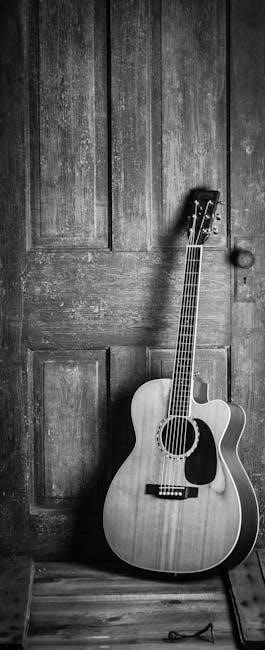
Alex Lifeson’s Guitar Work in “Limelight”
Alex Lifeson’s guitar work in “Limelight” is iconic, blending intricate riffs, soaring solos, and precise technique. His playing defines the song’s identity and showcases his mastery of progressive rock.
Alex Lifeson’s Contribution to Rush’s Sound
Alex Lifeson’s guitar work is instrumental to Rush’s unique sound, blending intricate techniques with melodic sensibility. His ability to craft memorable riffs and solos, as seen in “Limelight,” has left a lasting impact on rock music. Lifeson’s use of effects and innovative playing styles has influenced countless guitarists, making him a cornerstone of Rush’s legacy. His contributions not only define the band’s aesthetic but also elevate their compositions to new heights, ensuring his influence remains timeless in the world of progressive rock.
Unique Guitar Techniques in “Limelight”
Alex Lifeson showcases a variety of unique techniques in “Limelight,” including intricate arpeggios, sweeping legato passages, and dynamic chord work. His use of alternate picking and tapping creates a mesmerizing interplay, while the harmonic-rich solos add depth to the track. Lifeson’s ability to blend rhythm and lead seamlessly is a hallmark of his style, making “Limelight” a standout piece in Rush’s discography. These techniques, meticulously detailed in guitar tabs, provide players with a roadmap to mastering the song’s complexities and understanding Lifeson’s innovative approach to guitar playing.
Lifeson’s Equipment and Tone in the Song
Alex Lifeson’s distinctive tone in “Limelight” is shaped by his use of a Fender Stratocaster and Gibson ES-355 guitars, paired with Marshall and Fender amps. His rig includes a range of effects pedals to achieve the song’s dynamic sound. Lifeson’s equipment setup delivers a clear, articulate tone with a balance of warmth and bite, perfectly capturing the track’s intricate guitar parts. The Lerxst Limelight guitar, designed in collaboration with Godin, replicates his signature sound, offering fans a way to emulate his playing style. This equipment combination ensures that the guitar work in “Limelight” remains iconic and influential, providing a rich sonic experience for listeners and inspiration for musicians.
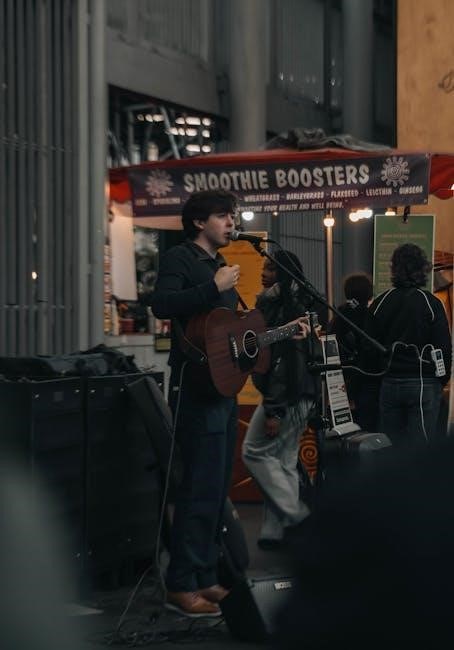
Downloading and Using the “Limelight” Guitar Tab PDF
The “Limelight” guitar tab PDF is widely available on platforms like Songsterr and Ultimate-Guitar. Download and print the tab using software like Guitar Pro or Power Tab Editor.
Best Sources for the “Limelight” Guitar Tab PDF
Reliable sources for the “Limelight” guitar tab PDF include websites like Songsterr, Ultimate-Guitar, and Guitar Tab Universe. These platforms offer accurate and detailed transcriptions for both guitar and bass. Additionally, fan communities on Patreon and specialized forums share high-quality tabs created by enthusiasts. For official transcriptions, consider Guitar World or Hal Leonard, which provide professional-grade sheet music. Ensure to verify the accuracy of free tabs, as some may lack completeness or precision. Paid options often include additional features like tempo control and interactive tools, enhancing the learning experience. Always download from reputable sites to avoid malware risks. The Lerxst Limelight PDF by Godin Guitars is another excellent resource, designed specifically for Rush fans.
How to Download and Print the Tab
To download and print the “Limelight” guitar tab PDF, visit reputable websites like Songsterr, Ultimate-Guitar, or Guitar Tab Universe. Select the desired tab version and click the download link. Ensure the file is in PDF format for compatibility. Use a PDF viewer like Adobe Acrobat to open the file. Adjust print settings to “Actual Size” or “Fit to Page” for clarity. Print on standard paper or high-quality sheet music paper for better readability. Some tabs may require account registration or a small fee for access. Always preview the tab before printing to verify accuracy and completeness. This ensures a smooth learning experience for mastering Rush’s iconic track.
Software for Viewing and Editing Guitar Tabs
Several software tools are available for viewing and editing guitar tabs, including Power Tab Editor, Guitar Pro, and TuxGuitar. Power Tab Editor is ideal for creating and modifying tabs, offering features like playback and MIDI export. Guitar Pro provides advanced editing options, realistic audio playback, and compatibility with PDF files. TuxGuitar is a free, open-source alternative with tab editing and playback capabilities. These programs allow users to visualize and practice “Limelight” accurately. They support various file formats, ensuring compatibility with downloaded tabs. Using these tools enhances the learning process by enabling musicians to slow down sections, loop parts, and refine their technique effectively.
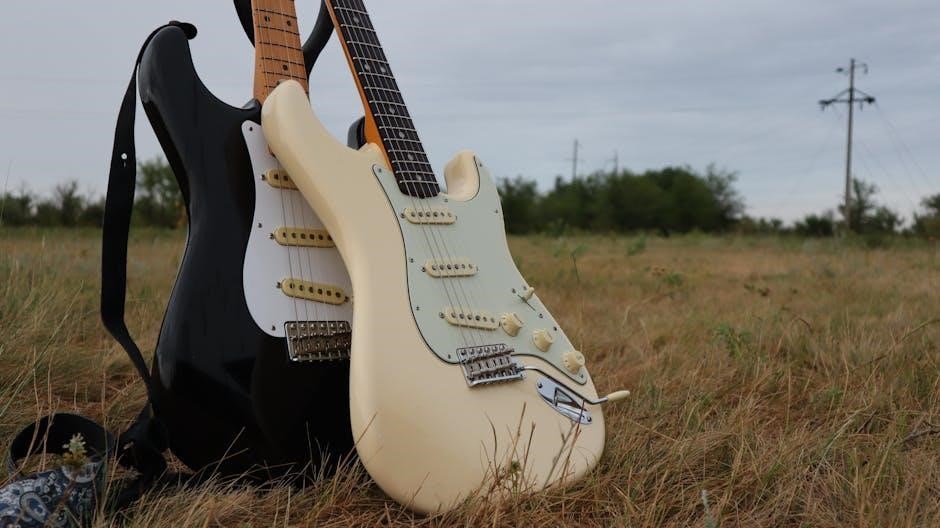
Learning to Play “Limelight” Using the Tab
Using the tab, guitarists can accurately learn “Limelight’s” intricate riffs and solos. It provides a clear visual guide, ensuring precise note placement and timing, essential for mastering this classic rock masterpiece.
Breaking Down the Song into Sections
“Limelight” can be divided into distinct sections: intro, verses, chorus, bridge, and solo. Each part has unique chord progressions and techniques. The guitar tab PDF provides a detailed breakdown, allowing players to focus on specific segments. Start with the iconic intro riff, then move to the verses, emphasizing precise timing and chord transitions. The chorus requires strong, rhythmic playing, while the bridge demands intricate fingerwork. Isolating these sections helps build mastery. Pay attention to tempo changes and time signatures, as “Limelight” shifts between 4/4 and 3/4 time. Practicing each section slowly ensures accuracy and control, making the learning process manageable and effective.
Practicing the Iconic Riff and Solo
The opening riff of “Limelight” is one of rock’s most recognizable, requiring precise alternate picking and palm muting. Focus on the tab’s intricate details, ensuring each note aligns with the rhythm. The solo, renowned for its melodic complexity, should be practiced in smaller phrases, emphasizing vibrato and bending accuracy. Use the PDF tab to dissect Alex Lifeson’s techniques, such as his use of legato playing and string skipping. Breaking the solo into manageable sections allows for gradual mastery. Slow practice with a metronome helps build speed and precision. Pay attention to tone settings and effects to replicate the original sound. Dedication to these elements will make the riff and solo sound authentic and impressive.
Tips for Mastering the Complex Parts
Mastering “Limelight” requires a focus on precision and patience. Start by breaking the song into smaller sections, such as the iconic riff and solo, and practice each part slowly. Use the PDF tab to identify intricate finger placements and string transitions. Emphasize proper alternate picking and legato techniques for the riff’s fluidity. For the solo, practice bends and vibrato to match Alex Lifeson’s melodic style. Utilize a metronome to build speed gradually. Pay attention to timing and rhythm, as these are critical to the song’s structure. Additionally, experiment with tone settings to replicate the original sound. Consistent practice and attention to detail will help you conquer the song’s challenging parts and deliver a polished performance.

Musical Elements of “Limelight”
“Limelight” features a verse-chorus structure with a memorable guitar solo, driving rhythm, and distinctive bassline. The song’s tempo is moderate, with a key of C major, creating an anthemic feel that resonates with listeners.
Structure and Composition of the Song
“Limelight” is a masterfully structured song from Rush’s 1981 album Moving Pictures. It begins with a iconic guitar riff in E major, leading into a verse-chorus format. The intro features a memorable arpeggiated pattern, while the verses and choruses maintain a steady, driving rhythm. A standout guitar solo bridges the sections, showcasing intricate playing. The song concludes with a reprise of the main riff and a fading outro. This clear structure, combined with its melodic hooks and complex instrumentation, makes “Limelight” a timeless rock anthem. Guitar tabs and sheet music detail these elements, allowing musicians to study and play along with precision.
Tempo, Time Signature, and Key
“Limelight” by Rush is played in the key of E major, with a time signature of 4/4 and a tempo of approximately 132 BPM; The song’s structure is tightly composed, blending intricate instrumental passages with melodic vocals. The use of E major provides a bright, uplifting quality, while the consistent 4/4 rhythm drives the track forward. Guitarists will find the tablature essential for navigating the song’s complex arpeggios and solos, which are precisely notated in E major. The tempo and key choices highlight the band’s technical prowess and contribute to the song’s enduring appeal. Musicians studying the guitar tab will gain insight into how these elements combine to create a rock masterpiece.
Lyrics and Their Relation to the Guitar Parts
The lyrics of “Limelight” by Rush, written by Neil Peart, explore themes of fame, isolation, and the pressures of the spotlight. The guitar parts, crafted by Alex Lifeson, intricately complement the song’s introspective tone. The main riff, with its arpeggiated chords, mirrors the lyrical tension, creating a sense of movement and energy. The solo serves as a emotional bridge, elevating the track’s dramatic intensity. The interplay between vocals and guitar underscores the song’s narrative, with each instrument amplifying the other’s expression. This harmonious relationship between lyrics and guitar work is a hallmark of “Limelight,” making it a timeless rock anthem. Guitar tabs capture this synergy, allowing players to study and replicate the song’s iconic moments with precision.
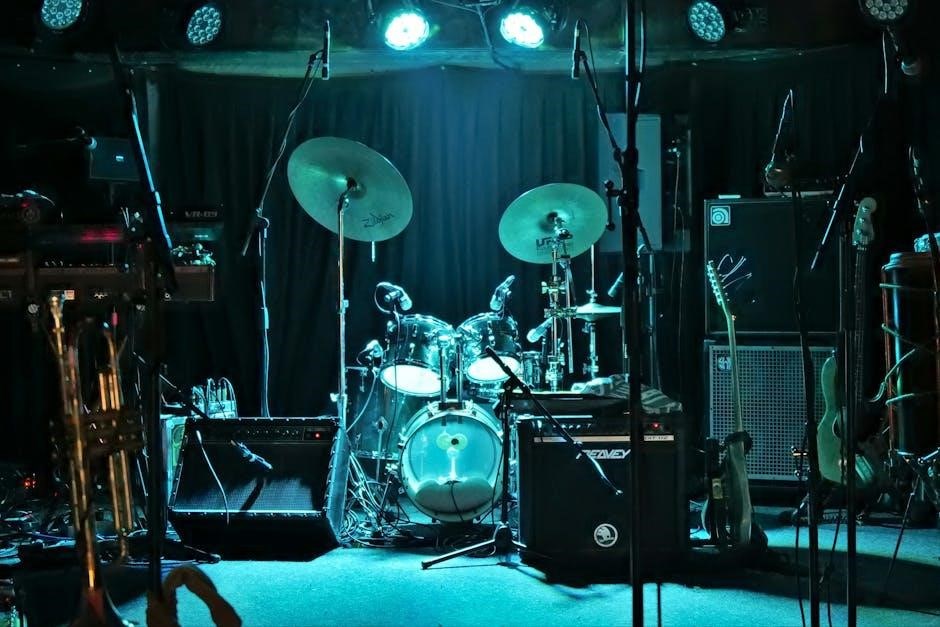
Guitar Equipment and Setup
For “Limelight,” Alex Lifeson used his signature Lerxst Limelight guitar, paired with a Marshall amp and custom effects pedals to achieve the song’s distinctive tone and clarity. String gauge and precise tuning are crucial for replicating the intricate riffs and solos accurately.
Recommended Guitar for Playing “Limelight”
The Lerxst Limelight guitar, a collaboration between Alex Lifeson and Godin, is ideal for playing “Limelight” due to its custom design and rich tone. Priced at $3,999, it captures Lifeson’s signature sound. While this guitar is tailored for Rush fans, other high-quality instruments like the Fender Stratocaster or Gibson Les Paul can also deliver the song’s complex riffs and solos. Key features to look for include a mahogany body, humbucker pickups, and a tremolo system for versatility. The guitar’s playability and sustain are crucial for mastering the track’s intricate sections. Lifeson’s equipment choices emphasize clarity and precision, making these guitars excellent choices for accurately recreating “Limelight.”
Amp Settings and Effects Pedals
For authentic “Limelight” tones, use a high-gain amp like a Marshall or Fender with overdrive pedals to capture Alex Lifeson’s signature sound. Set the amp to a slightly overdriven channel with medium gain, emphasizing clarity and sustain. A tube amp is preferred for warmth and dynamics. Use a delay pedal for the iconic solo’s ethereal effect and a touch of reverb for depth. Lifeson often employed a wah-wah during live performances for added expression. Experiment with EQ settings to balance highs and mids, ensuring the guitar cuts through without losing warmth. This setup ensures a tone that mirrors the track’s intricate riffs and solos, providing a balanced and powerful sound for playing “Limelight.”
String Gauge and Tuning
For “Limelight,” Alex Lifeson uses standard tuning (EADGBE) to achieve the song’s iconic riffs and solos. However, certain sections benefit from alternative tunings, such as drop D, to simplify chord shapes and enhance tonal depth. Using a string gauge of 9-42 or 10-46 provides optimal playability while maintaining clarity and sustain. Heavier strings can add warmth and resonance, especially for the intricate guitar parts. Proper tuning is essential to replicate the track’s precise harmonics and chord voicings. Lifeson often employed a combination of clean and overdriven tones, which rely heavily on accurate tuning for clarity. Experiment with string gauges to find the balance that suits your playing style while staying true to the song’s original sound.
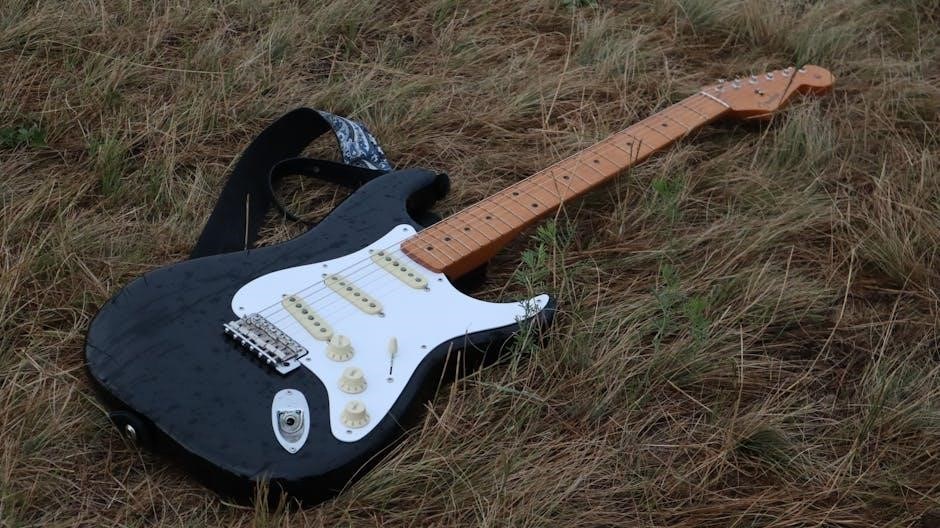
Community and Resources
Engage with online forums and communities dedicated to Rush fans and guitarists. Explore video tutorials, tab resources, and shared experiences to enhance your learning journey and refine techniques.
Online Communities for Guitarists Learning “Limelight”
Online forums and communities are invaluable for guitarists mastering Limelight. Websites like Reddit’s r/Guitar and r/Rush offer extensive discussions, shared tabs, and tips from experienced players. Social media groups dedicated to Rush fans provide a space to connect with fellow musicians, share progress, and learn from others. Additionally, specialized music forums like Ultimate-Guitar and Guitar World host threads where users exchange advice and resources. These platforms foster collaboration and provide access to user-generated content, ensuring guitarists can refine their skills and tackle complex sections like the iconic riff and solo with confidence. Engaging with these communities enhances the learning experience and keeps motivation high.
Video Tutorials and Lessons
Video tutorials are a powerful resource for mastering Limelight. Platforms like YouTube and Guitar Tricks offer lessons that break down the song’s intricate guitar parts. Instructors often use the official tablature to guide learners through challenging sections, such as the iconic riff and solo. These tutorials provide visual and auditory cues, making it easier to understand timing, technique, and tone. Many videos focus on specific techniques like alternate picking and legato playing, which are essential for capturing Alex Lifeson’s unique style. Additionally, online lessons often include tips for improving overall guitar skills, making them invaluable for both beginners and advanced players aiming to perfect Limelight.
Additional Resources for Improving Technique
Beyond video tutorials, there are numerous resources to enhance your guitar skills for playing Limelight. Websites like Songsterr and Ultimate Guitar offer interactive tabs and detailed lessons. Additionally, online forums and communities, such as Reddit’s r/guitar, provide valuable insights and tips from experienced players. Books on advanced guitar techniques, like those focusing on alternate picking and legato playing, can also be beneficial. Furthermore, podcasts featuring interviews with professional guitarists, such as Alex Lifeson, offer inspiration and practical advice. Utilizing practice tools like loopers and metronomes can help refine your timing and accuracy. These resources complement the tablature, ensuring a well-rounded approach to mastering Limelight and improving overall guitar proficiency.
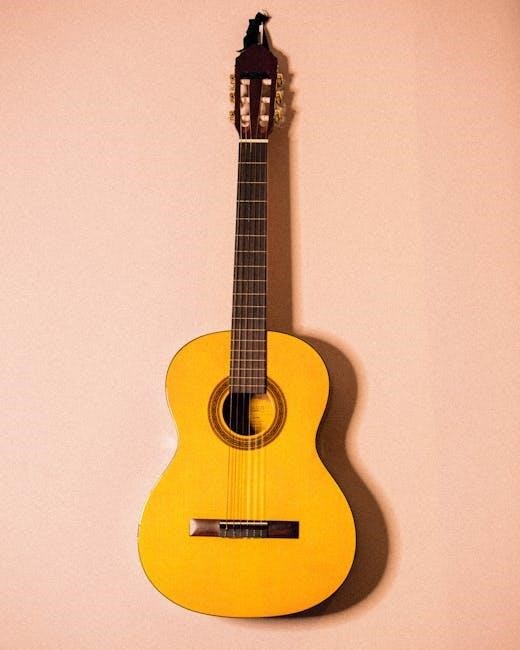
Cultural Impact and Legacy
As a classic rock anthem, “Limelight” has significantly influenced guitarists and remains a staple in live performances and covers, cementing its enduring legacy in music.
“Limelight” as a Classic Rock Anthem
“Limelight” stands as one of the most iconic tracks in classic rock, celebrated for its powerful guitar riffs, intricate composition, and enduring popularity. Ranked among the greatest rock songs, it has been featured in Guitar World’s list of the 100 Greatest Classic Rock Guitar Songs, highlighting its influence. The song’s memorable structure and solos have made it a staple in live performances, with fans and musicians alike admiring its complexity. Its presence in various covers and tributes further solidifies its status as a rock anthem, ensuring its legacy endures across generations of music lovers and aspiring guitarists.

Influence on Guitarists and Music Education
“Limelight” has profoundly influenced countless guitarists, inspiring mastery of its intricate riffs and solos. Its inclusion in Guitar World’s list of the 100 Greatest Classic Rock Guitar Songs underscores its educational value. Many musicians use guitar tabs of “Limelight” to study Alex Lifeson’s techniques, fostering technical growth. The song’s complexity makes it a staple in music education, encouraging players to explore advanced methods. Additionally, resources like the Lerxst Limelight guitar, designed by Alex Lifeson, and interviews in podcasts such as Shred With Shifty, further inspire learning. This enduring impact ensures “Limelight” remains a cornerstone in both guitar education and rock music history.
Live Performances and Covers
“Limelight” has been a cornerstone of Rush’s live performances, showcasing Alex Lifeson’s virtuosic guitar work. Its enduring popularity has made it a fan favorite, with intricate solos and riffs that highlight the band’s technical prowess. Cover artists often attempt “Limelight,” drawn to its challenging yet rewarding composition. Guitar tabs and transcriptions, widely available online, have inspired countless musicians to perform and reinterpret the song. The Lerxst Limelight guitar, designed by Alex Lifeson, further fuels enthusiasts’ passion for replicating its iconic sound. Whether in concert or through covers, “Limelight” continues to captivate audiences, solidifying its legacy as a rock masterpiece.
The “Limelight” guitar tab PDF is a comprehensive guide for mastering Rush’s iconic song. Its accuracy and detail make it essential for guitarists aiming to perfect their performance. Keep practicing!
Final Thoughts on Learning and Playing “Limelight”
Mastery of “Limelight” requires dedication and patience. The guitar tab PDF provides a clear roadmap, but practice is key. Break the song into sections, focus on timing, and gradually build speed. Pay attention to Alex Lifeson’s unique techniques, such as intricate arpeggios and precise picking. Use of a metronome can help maintain the song’s dynamic tempo. Embrace challenges and enjoy the journey of recreating this rock masterpiece. Remember, consistent practice will unlock the full potential of your performance, ensuring a faithful rendition of this iconic track.
Encouragement for Guitarists to Keep Practicing
Learning “Limelight” is a rewarding journey that strengthens guitar skills and musical understanding. Embrace the challenge and celebrate small victories. Use the tab PDF as a guide, but also explore your own creativity; Regular practice builds confidence and mastery. Stay motivated by setting achievable goals and enjoying the process. Remember, every great guitarist began with determination and passion. Keep pushing forward, and your efforts will shine through in your performance of this legendary song.